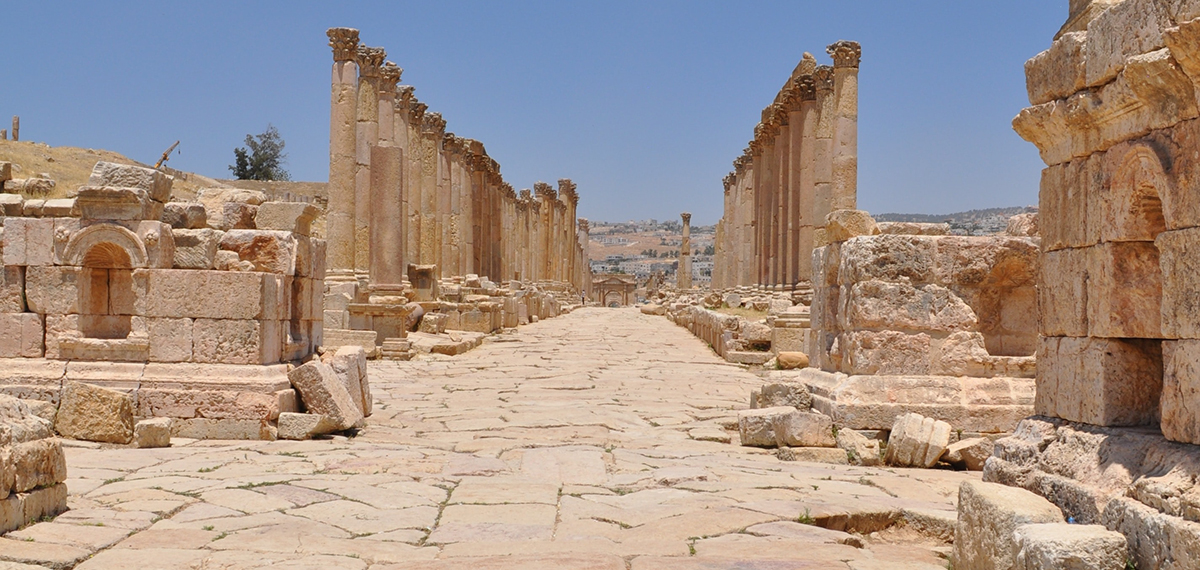Day 6: The world’s most reliable ancient document – Part 2c
If the history is wrong the claim is wrong.
Bible References (NIV)
1. So in the ninth year of Zedekiah’s reign, on the tenth day of the tenth month, Nebuchadnezzar king of Babylon marched against Jerusalem with his whole army. He encamped outside the city and built siege works all around it.
2. The city was kept under siege until the eleventh year of King Zedekiah.
5. He had a bronze helmet on his head and wore a coat of scale armor of bronze weighing five thousand shekels
6. on his legs he wore bronze greaves, and a bronze javelin was slung on his back.
7. His spear shaft was like a weaver’s rod, and its iron point weighed six hundred shekels. His shield bearer went ahead of him.
16.For forty days the Philistine came forward every morning and evening and took his stand.
26. David asked the men standing near him, “What will be done for the man who kills this Philistine and removes this disgrace from Israel? Who is this uncircumcised Philistine that he should defy the armies of the living God?”
45. David said to the Philistine, “You come against me with sword and spear and javelin, but I come against you in the name of the LORD Almighty, the God of the armies of Israel, whom you have defied.
46. This day the LORD will deliver you into my hands, and I’ll strike you down and cut off your head. This very day I will give the carcasses of the Philistine army to the birds and the wild animals, and the whole world will know that there is a God in Israel.
47. All those gathered here will know that it is not by sword or spear that the LORD saves; for the battle is the LORD ’s, and he will give all of you into our hands.”
48. As the Philistine moved closer to attack him, David ran quickly toward the battle line to meet him.
49. Reaching into his bag and taking out a stone, he slung it and struck the Philistine on the forehead. The stone sank into his forehead, and he fell facedown on the ground.
50. So David triumphed over the Philistine with a sling and a stone; without a sword in his hand he struck down the Philistine and killed him.
51. David ran and stood over him. He took hold of the Philistine’s sword and drew it from the sheath. After he killed him, he cut off his head with the sword. When the Philistines saw that their hero was dead, they turned and ran.
57. As soon as David returned from killing the Philistine, Abner took him and brought him before Saul, with David still holding the Philistine’s head.
58. “Whose son are you, young man?” Saul asked him. David said, “I am the son of your servant Jesse of Bethlehem.”
2. His disciples asked him, “Rabbi, who sinned, this man or his parents, that he was born blind?”
3. “Neither this man nor his parents sinned,” said Jesus, “but this happened so that the works of God might be displayed in him.
4. As long as it is day, we must do the works of him who sent me. Night is coming, when no one can work.
5. While I am in the world, I am the light of the world.”
6. After saying this, he spit on the ground, made some mud with the saliva, and put it on the man’s eyes.
7. “Go,” he told him, “wash in the Pool of Siloam” (this word means “Sent”). So the man went and washed, and came home seeing.
Devotional
The Bible verses you read today were selected because they each refer to people or places that sceptics of the Bible once tried to say never existed. That was until archaeology showed that they did!
During the past couple of hundred years, sceptics of the Bible have wanted to undermine trust in the Bible. Many archaeological excavations were undertaken with a bias as a result.
For some quick examples, Bible critics used to say that the Babylonian siege against Jerusalem (which you read about in 2 Kings 25) didn’t happen in the late 6th century BC like the Bible describes. That was, until pottery shards with ancient Hebrew scripts on them were uncovered 30 miles southwest of Jerusalem describing that very siege.
Bible critics even used to say that King David was just a mythical figure, despite the many accounts of his life in the Scriptures and strong cultural traditions. Then fragments of an ornament were found verifying that he was indeed a 10th Century king, well known to his neighbours, exactly as is written.
For a more recent example, Bible critics have suggested various places mentioned in the New Testament never existed. For example, the Pool of Siloam where the man born blind (John 9:1-7) went to wash and was healed. Then in 2004, the pool was accidentally discovered by men digging a sewer. Its excavation was completed in 2023, after which it was opened for public viewing.
Today there are more than 25,000 dig sites in connection with Biblical times and places – and they’ve proven again and again that the Bible’s accounts of history are accurate.
Nelson Glueck, a famed archaeologist of Jewish descent, summarised, “It may be stated categorically that no archaeological discovery has ever controverted [denied] a biblical reference. Scores of archaeological findings have been made which confirm in clear outline or exact detail the historical statements in the Bible.”
In the video clip you are about to watch, you’ll hear more – including comments from sceptics who investigated the matter, who were surprised by what they found.
Why then the continuing scepticism toward the Bible by various academics – as is still commonly echoed within public media and education? As the video clip also states – it is the miracles! If a person doesn’t believe in a God or spiritual realm, then for them, ‘miracles cannot happen’. They therefore conclude that the Bible’s accounts have to be unreliable – irrespective of the evidence.
Yet if a God or spiritual realm does exist, miracles are possible! So it is noted, 95% of the people on our planet are spiritual at some level.
In summary: The Bible claims to be a record of the history through which God has made himself known to us. This makes the historical reliability of the Bible’s accounts important – and as it happens, strong evidence exists to show that they are.
The significance is that, if God really has been revealing himself to us, we now know something new. Not only that God is good. He can be known!
The world’s most reliable ancient document – Part 2c — 5mins
Reflection questions
- Why is archaeological evidence important?
- How many archaeological dig sites now exist in connection with Bible times, combining to further verify the reliability of the Bible’s historical accounts? (Over 25,000 sites)
- Given the amount of evidence there is to suggest the Bible is reliable, why might some continue to criticise the Bible – while blatantly ignoring this evidence?
- What most convinces you that the Bible is a reliable record of the history through which God has revealed himself to us?
- What story or illustration might you be able to share with someone else to prompt them to consider that the Bible is a book of history?
For prayer
“Thank you, God, for engaging in history in ways that left a trail of evidence we could check through archaeology. You knew the kinds of questions we would ask. Thank you.”
related topics
coming up in our next devotion
Day 7: The World’s Most Prophetic Book – Part 3a
The Bible’s many hundreds of predictions are also very bold. With 5000 years of Bible history behind us, we can investigate to see whether the predictions came true. What we are, therefore, given is a way of testing whether the Bible does have the Divine hand of God behind it!



